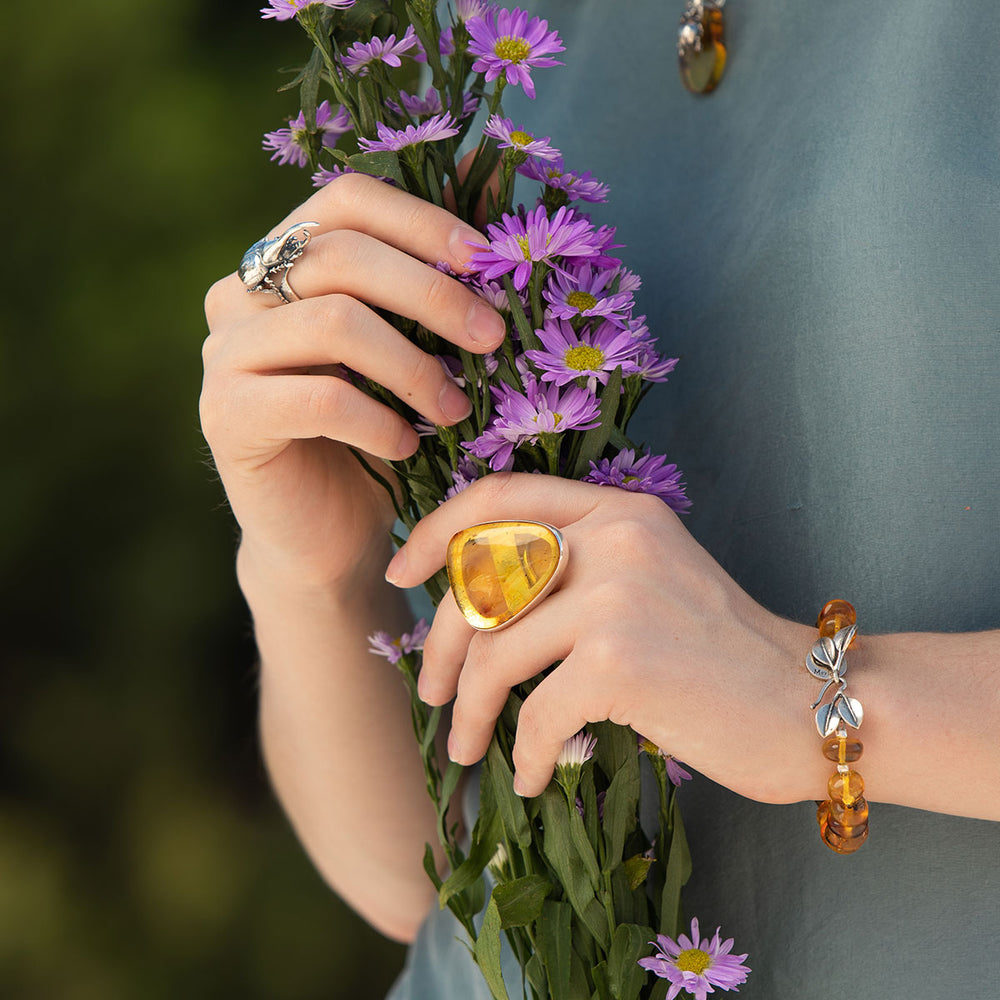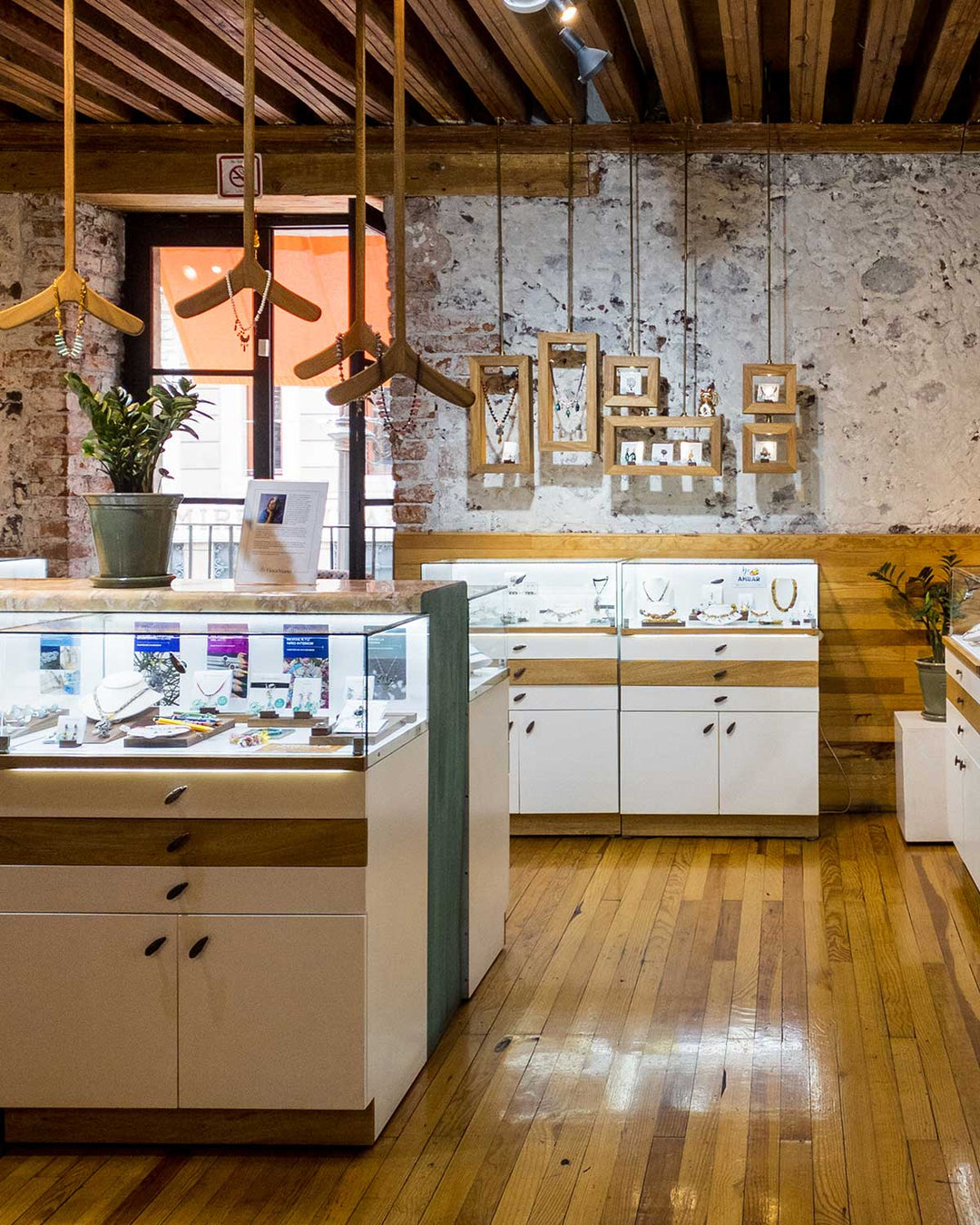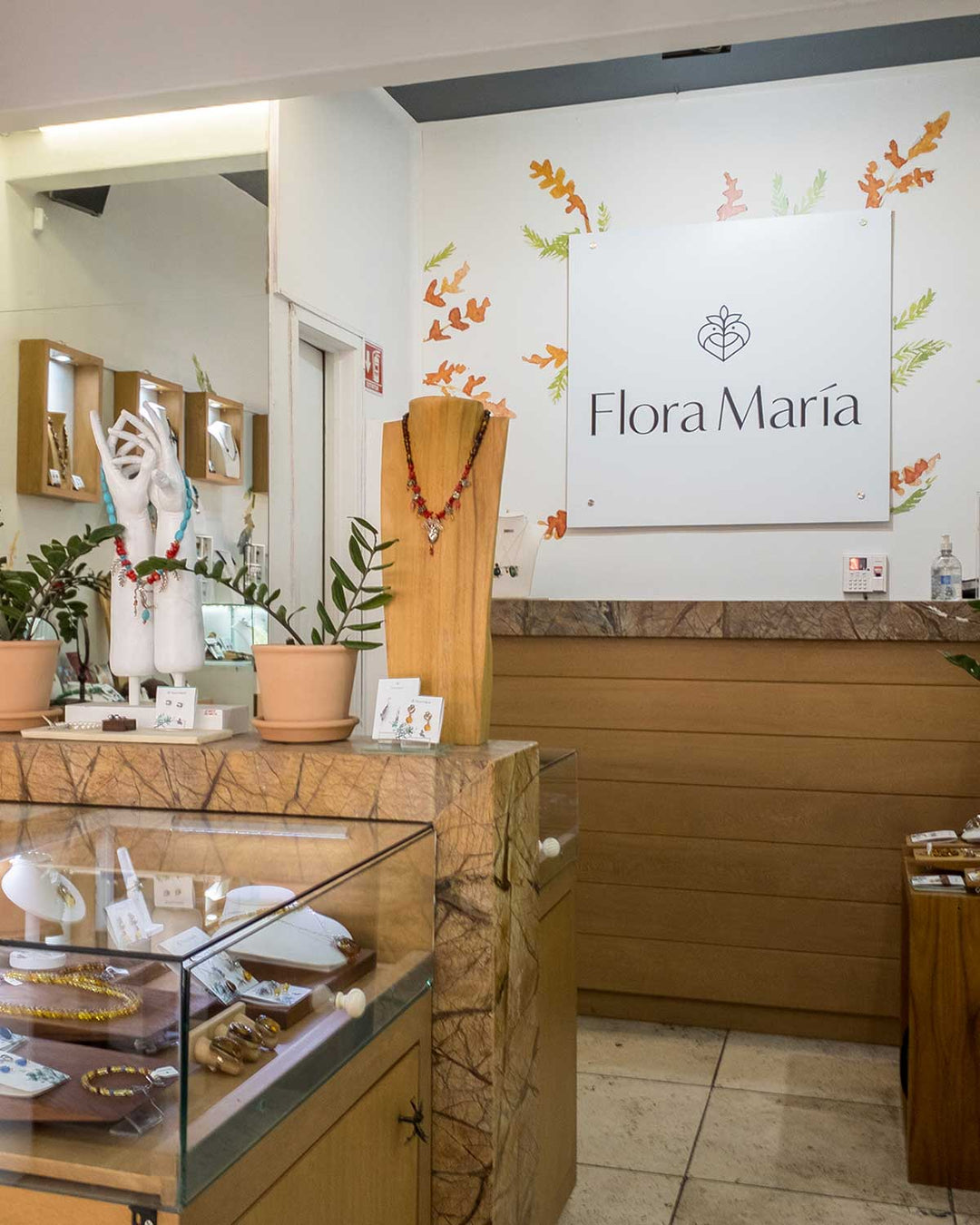Amber from Chiapas
Millions of years ago, now extinct mangrove trees produced resin deposits that were transformed into what we now know as one of nature's most beautiful gems: amber.
Today, amber is a central element in Flora María's work. We use it to complement our most representative pieces. It is the essence of our jewellery.
Amber is the only semi-precious stone of plant origin. It comes from the resin that certain trees generated to protect themselves, which along its way trapped small pieces of history: air bubbles, water droplets, dust particles and even small living beings such as plants and insects, which were protected in this resistant lair capable of preserving them for an eternity.
Eventually, the resin chunks, with all the things they contained, fell to earth and were eventually buried. Over the millennia, the original resin developed the hardness, density and melting point characteristic of amber. This plant gem outlived the trees that gave rise to it and the ecosystems of which it was a part.
There are only 20 amber deposits in the world, including Chiapas. Here, rocks loaded with amber were pushed by geological movements to form mountains where the first pieces of amber were released by erosion from where miners now dig tunnels to locate the vein and extract the Heart of Amber.

Mexican amber has achieved worldwide prestige for being the hardest and for its exquisite preservation.
Since the 15th century, it was part of the tributes that the inhabitants of the eight towns of Soconusco had to pay to the Mexicas. In addition, the Tzeltal vocabulary has three words to designate amber: pauch, amber stones; pauchil, amber used as nose rings; and hubti, amber used as kisses.
Throughout the centuries, amber has been used for its many properties and is a stone that has always been associated with strength, protection and life.
All these characteristics make amber a material full of cultural identity that we are proud to work with every day.









